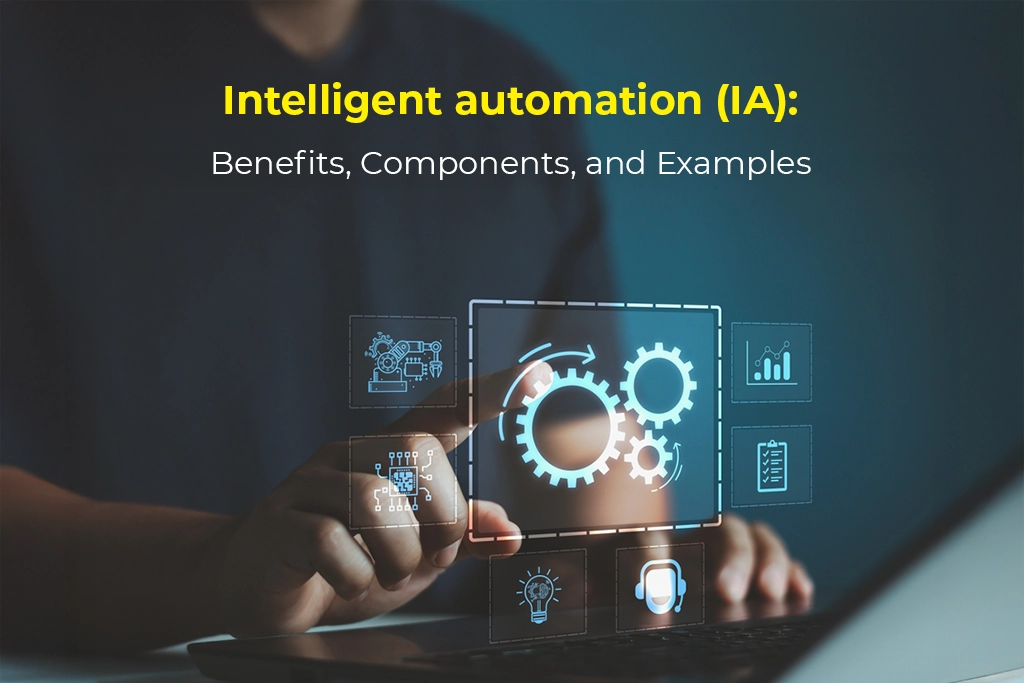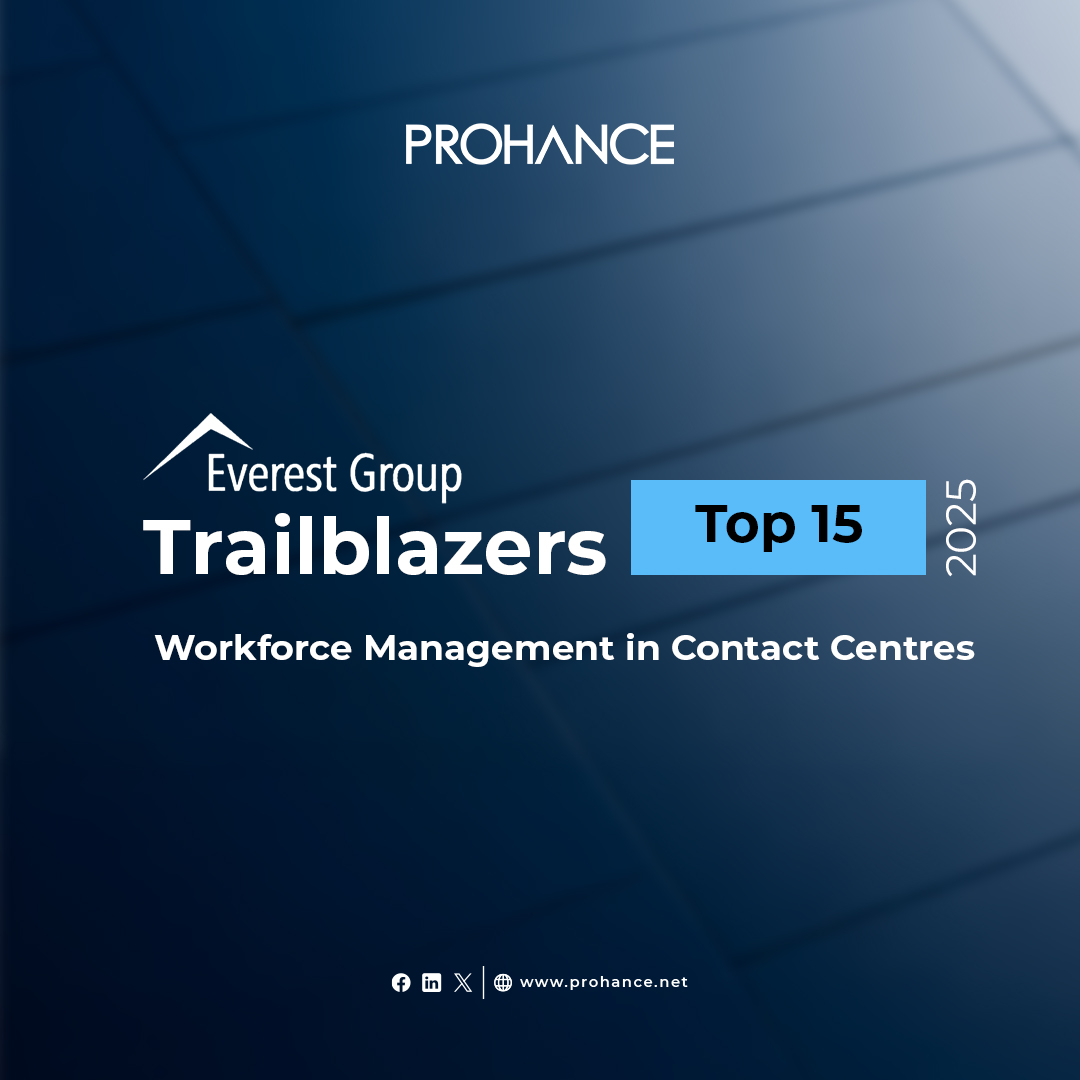Intelligent Automation: Benefits, Components, And Examples
- What is Intelligent Automation?
- Artificial Intelligence vs. Intelligent Automation: Clarifying the Confusion
- Historical Background: From Assembly Lines to Cognitive Machines
- Components of Intelligent Automation
- Benefits of Intelligent Automation
- Examples of Intelligent Automation in Action
- Intelligent Automation Consulting and Services
- Wrapping Up
- FAQs
Intelligent automation reflects the fusion of artificial intelligence (AI), robotic process automation (RPA), and advanced analytics to create self-learning systems that automate decision-heavy workflows.
Unlike basic automation, which follows static rules, IA adapts to new data, predicts outcomes, and continuously improves—transforming how businesses operate.
This blog will demystify IA, exploring its core components, undeniable benefits, and real-world applications. You’ll also discover how intelligent automation consulting and services help businesses bridge the gap between theory and execution.
What is Intelligent Automation?
Intelligent automation is more than a productivity tool—it’s a paradigm shift. Think of it as a “digital workforce” that combines:
- AI’s cognitive power (e.g., analyzing unstructured data like emails or images).
- RPA’s precision (e.g., processing payroll or invoices).
- Business intelligence automation (e.g., generating real-time dashboards from raw data).
Artificial Intelligence vs. Intelligent Automation: Clarifying the Confusion
- AI mimics human reasoning. For example, an AI model might predict customer churn by analyzing behavior patterns.
- IA integrates AI with other tools to automate entire processes. For instance, an IA system could use AI predictions to trigger personalized retention campaigns via RPA bots, all without human input.
Historical Background: From Assembly Lines to Cognitive Machines
- 1980s–2000s: Basic automation for repetitive tasks (e.g., ATMs, factory robots).
- 2010s: Rise of RPA for rule-based digital tasks (e.g., data entry).
- 2020s: AI-powered IA handles complex workflows (e.g., diagnosing equipment failures and personalizing marketing).
Components of Intelligent Automation
Core Technologies
- Artificial Intelligence (AI) & Machine Learning (ML): Analyze data to make decisions. ML improves over time (e.g., smarter chatbots).
- Robotic Process Automation (RPA): Executes repetitive tasks like invoice handling or form filling.
- Natural Language Processing (NLP): Powers tools like voice assistants and sentiment analysis systems.
Infrastructure & Tools
- Intelligent Workflow Automation: Platforms like ProHance automate processes across ERP, CRM, and HR systems.
- Business Intelligence Automation: Tools like Tableau auto-generate insights and reports.
Benefits of Intelligent Automation
Supercharged Efficiency & Productivity
IA reduces processing time by 70%. Telecom companies use IA chatbots to cut call time by 45%, and banks process mortgages in 10 days vs. 30.
Tangible Cost Savings
IA helps avoid costly human errors—IBM estimates businesses lose up to $3 trillion annually. A financial institution saved $340 million through contract automation.
Smarter, Faster Decision-Making
McKinsey reports data-driven companies are 23x more likely to acquire customers and 19x more profitable. Netflix’s IA algorithms drive 80% of viewer engagement.
Employee Empowerment
IA reduces time spent on repetitive tasks, allowing employees to focus on strategy and customer relationships.
Scalability & Flexibility
Cloud-based IA tools help 80% of organizations scale operations and respond to demand spikes like seasonal orders.
Examples of Intelligent Automation in Action
Financial Services: Fighting Fraud in Real Time
HSBC used IA to reduce 60% of false positives in fraud detection.
Healthcare: From Paperwork to Patient Care
Cleveland Clinic uses NLP to extract key clinical data, improving diagnoses and reducing manual entry time.
Manufacturing: Predictive Maintenance
Siemens leverages IA to predict machinery failures—saving millions in potential downtime.
Customer Service: 24/7 Support
Vodafone’s chatbot TOBI improved first-time resolution rates from 15% to 60%.
Marketing: Hyper-Personalization
Netflix’s IA engine drives 80% of content views with personalized recommendations.
Emerging Use Cases
- HR: Automating resume screening and onboarding.
- Legal: AI contract review tools cut turnaround time significantly.
Intelligent Automation Consulting and Services
Why Expertise Matters
IA is about aligning tools with strategy. For example, a ProHance consultant helped a retailer reduce stockouts via IA-driven inventory optimization.
Implementation Roadmap
- Assessment: Audit processes (e.g., hospitals find 30% of time spent on data entry).
- Prioritization: Begin with high-impact, low-complexity areas.
- Integration: Bridge legacy systems using APIs and connectors.
- Training: Educate employees to manage and trust the tools.
Overcoming Challenges
- Data Silos: Cloud BI solutions centralize access—88% of companies report better accessibility.
- Change Management: Retrain teams for new roles, as seen in banks that reassign staff from loan data entry to customer relations.
Wrapping Up
Intelligent automation isn’t a luxury—it’s a necessity. With 94% of businesses relying on analytics, the power of IA is undeniable.
Ask yourself: can your business afford not to implement IA? When done right, it’s your pathway to competitive advantage.
Ready to transform your business? Explore ProHance’s intelligent automation services to turn complexity into clarity.
FAQs
Can intelligent automation handle tasks that require “human judgment” or creativity?
While IA excels at data-driven decisions (e.g., approving loan applications based on credit scores), it’s not a replacement for human creativity. However, it augments judgment by providing real-time insights. For instance, IA can analyze customer sentiment from 10,000 surveys and highlight trends, but a marketer still crafts the campaign message. Think of IA as the co-pilot—it handles the heavy lifting so humans can focus on innovation.
What’s the most significant hidden challenge businesses face when scaling IA?
Change fatigue. Employees often embrace IA initially, but constant tool updates or process tweaks can lead to burnout. For example, a retail chain rolling out IA-powered inventory management saw pushback when staff had to relearn workflows quarterly. The fix? Involve teams early, provide ongoing training, and celebrate small wins to maintain buy-in.
How does IA impact customer experiences beyond faster service?
It enables hyper-personalization. For example, IA can analyze a customer’s past purchases, social media activity, and even weather data to suggest products. A coffee brand used IA to recommend blends based on local weather—offering iced brews during heatwaves, boosting sales by 12%. Customers feel “seen,” not just served.
What’s the one thing most businesses overlook when adopting IA?
Documentation. Teams often focus on implementation but forget to map updated workflows. When a tech firm’s IA lead quit, no one knew how the fraud detection model was trained. Now, they keep an “IA playbook” with step-by-step guides, contact lists, and backup protocols. Treat IA like a team member—onboard it properly!






